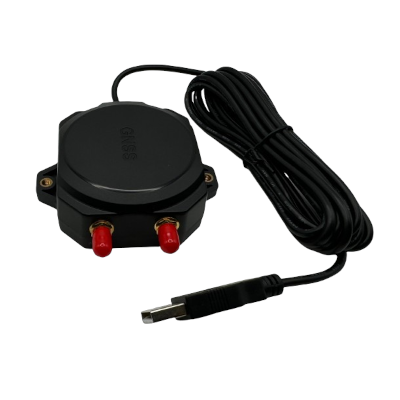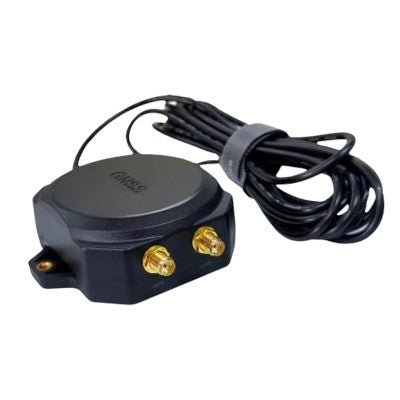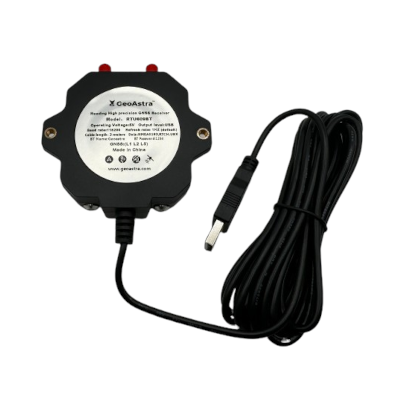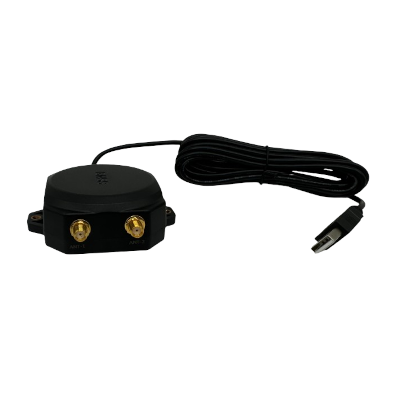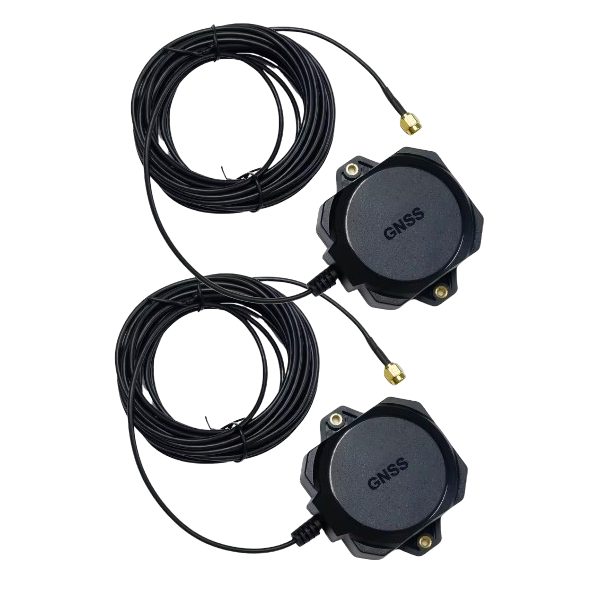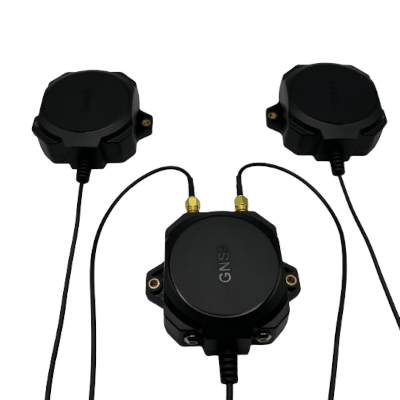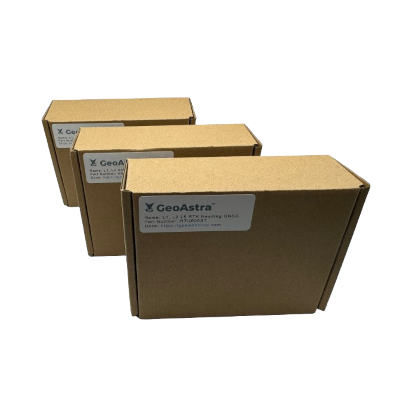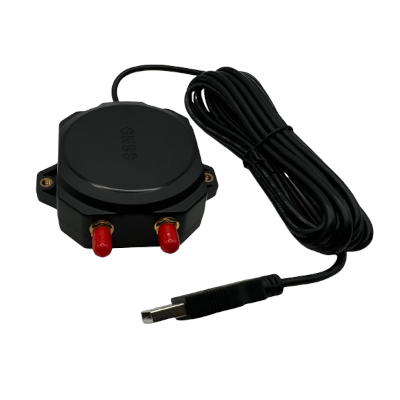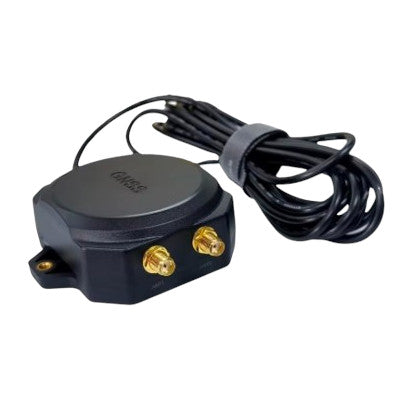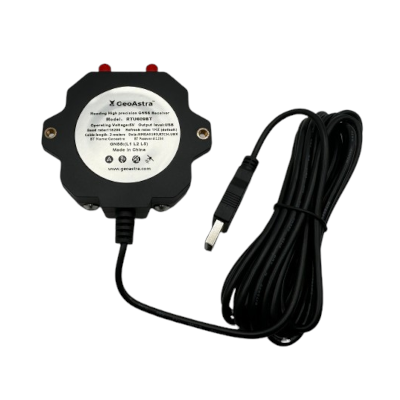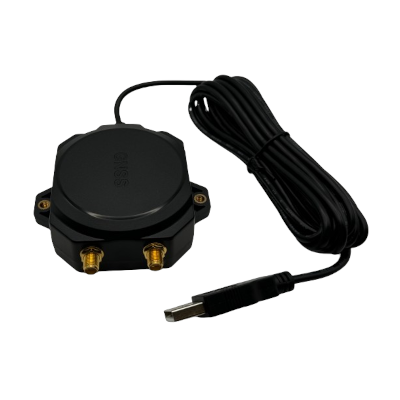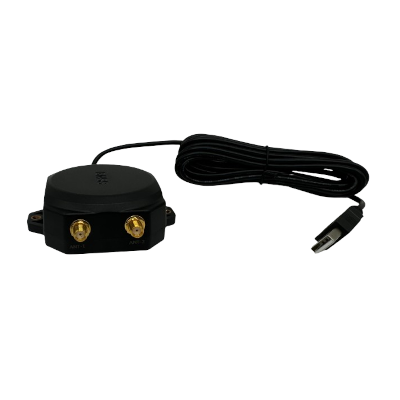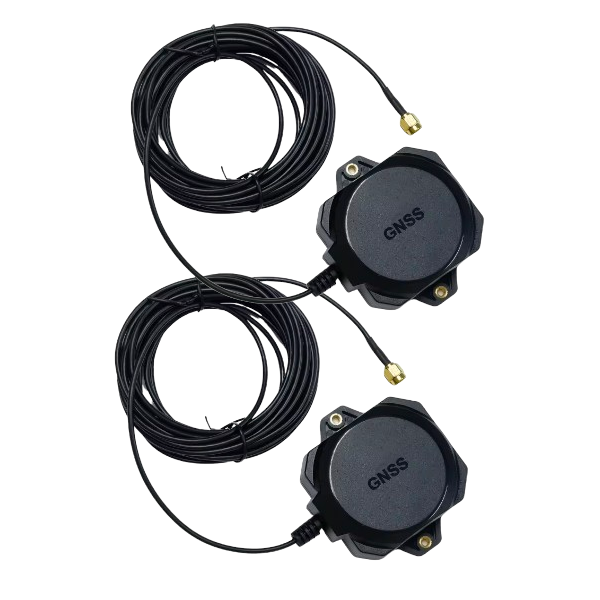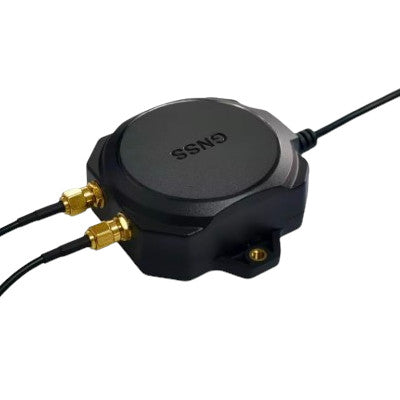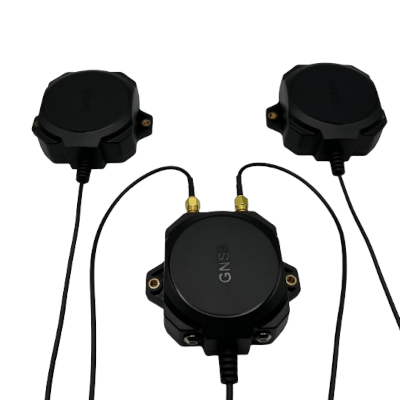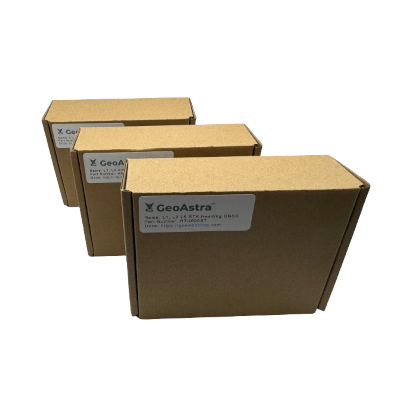GeoAstra RTU609BT Dual RTK Heading GNSS Receiver (Dual-RTK Engine, Dual-antenna, Bluetooth and USB Dual interfaces, L1, L2 and L5 Tri-Band, up to 0.8 cm position accuracy and 0.2 ° direction accuracy)
GeoAstra RTU609BT Dual RTK Heading GNSS Receiver (Dual-RTK Engine, Dual-antenna, Bluetooth and USB Dual interfaces, L1, L2 and L5 Tri-Band, up to 0.8 cm position accuracy and 0.2 ° direction accuracy)
Couldn't load pickup availability
Volume Discount Table
| Minimum Qty | Discount |
|---|---|
| 2 + | 5% off |
| 5 + | 6% off |
| 10 + | 7% off |
| 100 + | 9% off |
The GeoAstra RTU609BT is a high-precision heading and positioning RTK GNSS receiver designed for advanced applications such as UAVs, autonomous machines, and precision agriculture. It supports all major satellite constellations (GPS, BDS, GLONASS, Galileo, QZSS) and operates on key frequencies (L1, L2, L5).
Key Features:
On-Chip RTK Positioning and Dual-Antenna Heading: Allows for precise real-time positioning and accurate orientation.
Dual-Antenna Orientation Solution: Determines precise orientation by using signals from two separate antennas.
Dual-RTK Engine Technology: Features two RTK engines, allowing it to process RTK signals simultaneously from two different sources or antennas, improving accuracy and reliability.
Advanced Anti-Interference Unit: Ensures reliable and accurate positioning data even in complex electromagnetic environments.
Integrated High-Precision Algorithms: The module integrates RF, baseband, and high-precision algorithms for enhanced performance.
Powerful SoC Design: The system-on-chip (SoC) includes a dual-core CPU, a high-speed floating-point processor, and an RTK co-processor, all within a 22 nm low power design. It supports 1408 super channels, providing strong signal processing capabilities.
Flexible Positioning Configuration: Allows for multi-system joint positioning or single-system standalone positioning, catering to various application needs.
Full-System, Full-Frequency Support: Supports RTK positioning across all major GNSS systems (GPS, GLONASS, Galileo, BeiDou, and QZSS) and frequencies.
How does the Heading Works?
A heading RTU609BT RTK receiver comes equipped with dual RTK engines and dual antennas: one primary and one secondary. The primary RTK engine and antenna function as an RTK base station, while the secondary RTK engine and antenna act as an RTK rover. This setup represents a typical RTK moving base configuration, where both the RTK base and RTK rover are in motion.
In this setup, high-precision relative heading and positioning can be achieved without a fixed RTK base station. The relative positioning accuracy between the moving base and the rover relies on phase difference measurements between them, rather than on error correction data from a fixed RTK base station.
How is the heading determined ?
-
Antenna Arrangement: Two antennas (Antenna A and Antenna B) are installed on the same carrier with a known baseline length between them.
-
Signal Reception: Both antennas simultaneously receive signals from multiple GNSS satellites.
- Phase Difference Measurement: The dual-engine RTK receiver measures the phase difference of signals received by the two antennas to calculate the relative position change between them.
- Heading Calculation: Using the known baseline length and the measured phase difference, the receiver computes the heading angle of the carrier.
Two Typical Usage Scenarios for RTU608BT
Scenario 1: High-Accuracy Heading
In this scenario, a CORS service is not required. If only heading information is needed without high-precision absolute positioning, a fixed RTK base station or CORS service is unnecessary. As illustrated in the diagram below, the rear antenna acts as the moving base antenna, and the front antenna serves as the rover antenna. The heading is determined from the moving base antenna to the rover antenna.

Scenario 2: High-Accuracy Heading and Positioning
In this scenario, a CORS service is required. When both heading and absolute position data are needed, the rear antenna serves as the moving base antenna, and the front antenna functions as the rover antenna. The heading is determined from the moving base antenna to the rover antenna.
When the moving base engine of the RTU608BT uses CORS correction data, it can resolve its RTK-level high-accuracy position. The rover engine, receiving correction data from the moving base, can also resolve a high-accuracy absolute position. Thus, the RTU609BT can determine both absolute direction and position with RTK-level accuracy.
Without a CORS service, the RTU609BT can only achieve non-RTK position accuracy and RTK heading accuracy.

GeoAstra RTU609BT Screenshots Demo:
1. RTU609BT Heading Configuration

2. Heading Output in Standard NMEA Format
Below is a screenshot of the standard NMEA output from the HDT sentence, which streams the heading data. You may also notice the FixType is "RTK Fixed", indicating RTK-level heading accuracy.

3. Two Dimensional Direction Output
The RTU609BT provides not only heading data but also 2-dimensional direction data. For example, mounting two antennas on the X-axis of the plane provides both heading and roll information.

Below is a screenshot of the “Heading” sentence, which streams the heading and pitch data (the "pitch" here is actually "roll" because the two antennas are mounted on the X-axis of the plane).

Tech specs:
GPS: L1/L2/L5
BDS: B1/B2
GLONASS: L1/L2
Galileo: E1/E5a/E5b
QZSS: L1/L2/L5
Channel: 1408 Search Channels
Single point positioning (RMS):
• Plane: 1.5m
• Elevation: 2.5m
DGPS (RMS):
• Plane: 0.4m
• Elevation: 0.8m
RTK (RMS):
• Plane: 0.8cm+1ppm
• Elevation: 1.5cm+1ppm
Directional accuracy (RMS): 0.2°/1m baseline
Time Precision (RMS): 20 ns
Speed accuracy (RMS): 0.03 m/s
Cold start: <30s
Initialization time: <5s (typical value)
Initialize reliability: >99.9%
Data update rate:
• 20 Hz Positioning & Heading
• 20 Hz Raw Data observation
Differential Data: RTCM V3.x/3.3/2.3/1.3/1.0
Data pattern: NMEA-0183 Unicore
Baud rate: 115200 Default
Update rate: 0.25Hz-20Hz, default 1Hz
Working level: USB
Working voltage: 3.3V~5V
Dimensions: 82.071.826mm
Weight: 165g
Connector: USB+2*SMA-J
Cable length: 3m
Waterproof level: IP67
Working temperature: -40°C ~ +85°C
Storage temperature: -40°C ~ +85°C
Humidity: 95% No condensation
Vibration: GJB150.16A-2009, MILSTD-810F
Shock: GJB150.18A-2009, MIL-STD-810F
Bluetooth Name: GeoAstra
Bluetooth password: 1234
Dimension(mm):


Product Resources
YouTube Videos:
Driver Downloads:
Tool Downloads:
How to Articles and Blogs:
-
 How to use a RTK GNSS Receiver for Android: A Step-by-Step Guide
How to use a RTK GNSS Receiver for Android: A Step-by-Step Guide
-
 Utilizing a USB/Bluetooth RTK GNSS Receiver with a Windows 10/11 Laptop: A Step-by-Step Guide
Utilizing a USB/Bluetooth RTK GNSS Receiver with a Windows 10/11 Laptop: A Step-by-Step Guide
-
 How to Connect a USB/Bluetooth RTK GNSS Receiver to Windows? (Accessing NTRIP Through an Android Phone’s Internet Connection)
How to Connect a USB/Bluetooth RTK GNSS Receiver to Windows? (Accessing NTRIP Through an Android Phone’s Internet Connection)
-
 Utilizing a RTK GNSS Receiver for Linux: A Step-by-Step Guide
Utilizing a RTK GNSS Receiver for Linux: A Step-by-Step Guide
-
 Utilizing a USB/Bluetooth RTK GNSS Receiver for High Accuracy Data Logging: A Step-by-Step Guide
Utilizing a USB/Bluetooth RTK GNSS Receiver for High Accuracy Data Logging: A Step-by-Step Guide
-
 NTRIP RTK products buyers’ guide
NTRIP RTK products buyers’ guide
